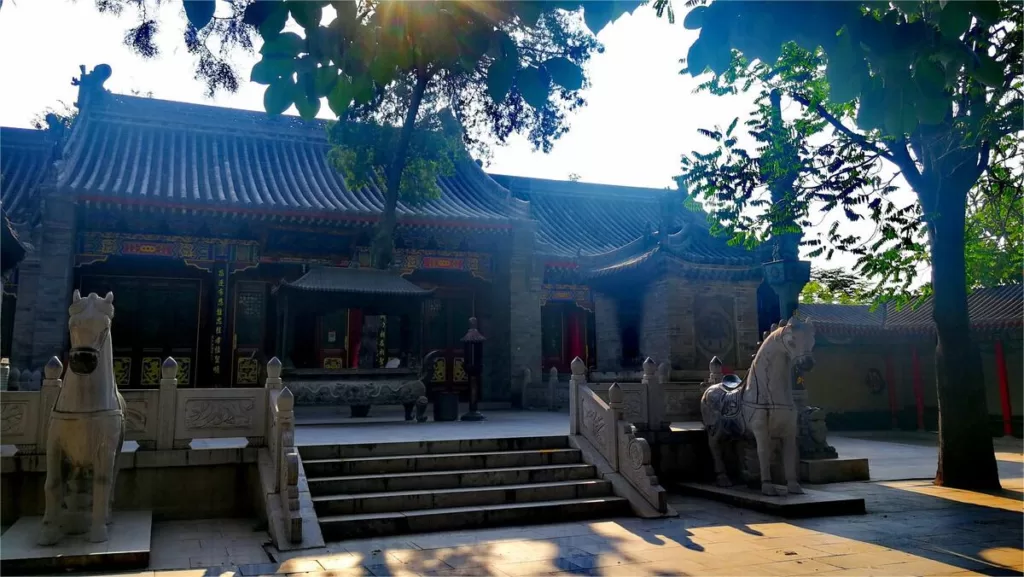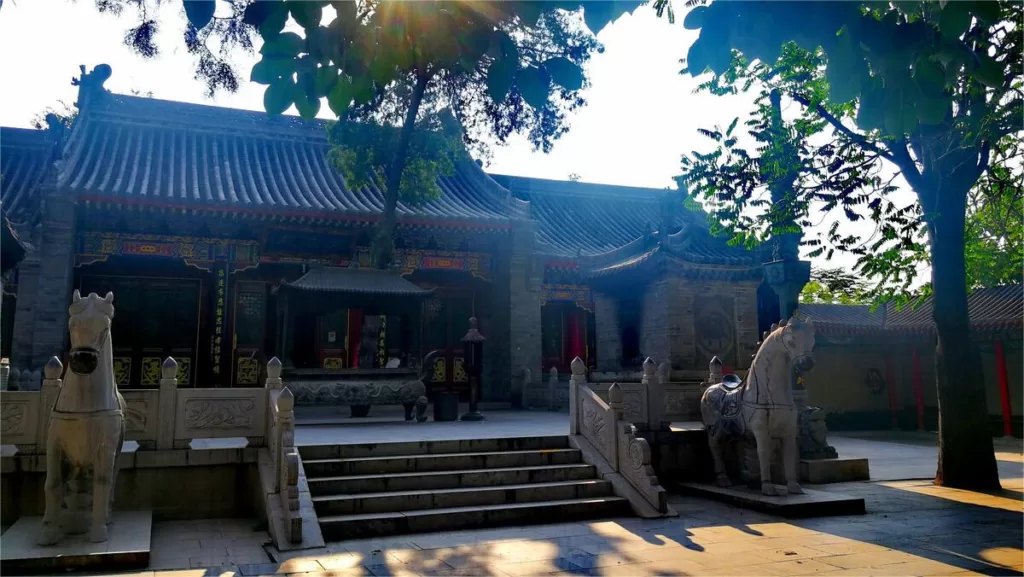Храм Нефритового источника в горе Хуа


The Jade Spring Temple (玉泉观), also known as Yuchuan Temple, is a magnificent Taoist temple situated on the southern slope of Mount Hua, one of the Five Great Mountains of China. Mount Hua, located in Shaanxi Province, is revered for its natural beauty, spiritual significance, and historical importance.
The Jade Spring Temple holds a significant place among the numerous temples and religious sites on Mount Hua. It is known for its stunning architecture, breathtaking views, and its importance as a place of Taoist worship and pilgrimage.
The temple complex is situated amidst a picturesque landscape, surrounded by lush green forests and towering cliffs. As visitors approach the temple, they are greeted by the tranquil sound of flowing water from the nearby Jade Spring, which is believed to have healing properties and is considered sacred by Taoists.
The architecture of the Jade Spring Temple is a fusion of traditional Chinese temple design and the natural surroundings. The buildings are meticulously constructed, showcasing intricate carvings, colorful paintings, and beautiful sculptures that reflect the rich Taoist heritage. The vibrant red and green colors used in the temple’s decoration create a visually striking contrast against the backdrop of the mountain.
The temple complex consists of several halls, pavilions, and courtyards, each serving a specific purpose. The main hall, known as the Doulao Hall, is dedicated to Laozi, the legendary philosopher and founder of Taoism. It houses a statue of Laozi and is the focal point of religious activities and rituals.
Other halls within the temple complex include the Sanqing Hall, dedicated to the Three Pure Ones of Taoism, and the Wenchang Hall, dedicated to the Taoist deity Wenchang Wang. These halls are adorned with intricate artwork and serve as places for devotees to offer prayers and seek blessings.
Apart from its religious significance, the Jade Spring Temple also offers breathtaking views of the surrounding natural landscape. Visitors can climb the steep steps to reach the temple, passing through narrow paths, stone bridges, and ancient stone inscriptions along the way. From the temple grounds, one can enjoy panoramic vistas of Mount Hua, including its rugged peaks, deep valleys, and distant horizons.
The temple attracts a large number of pilgrims, tourists, and photography enthusiasts throughout the year. Many visitors come to seek spiritual solace, participate in Taoist ceremonies, or simply to appreciate the beauty and serenity of the surroundings. The temple also serves as a base camp for those embarking on the challenging hike to the mountain’s summit.
In conclusion, the Jade Spring Temple on Mount Hua is a remarkable Taoist temple that offers a unique blend of religious significance, architectural splendor, and natural beauty. Its rich history, stunning scenery, and cultural significance make it a must-visit destination for those exploring the spiritual and natural wonders of China.